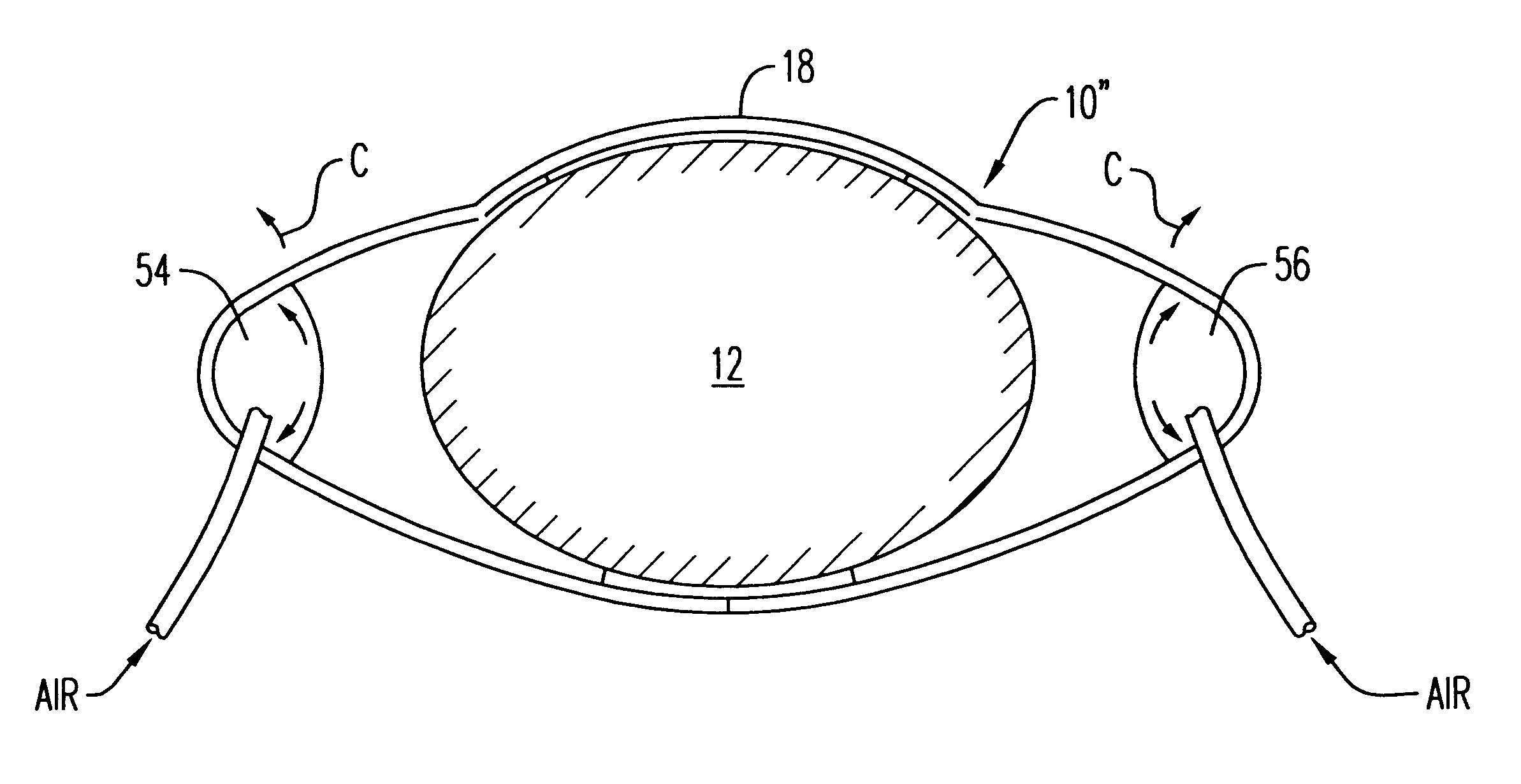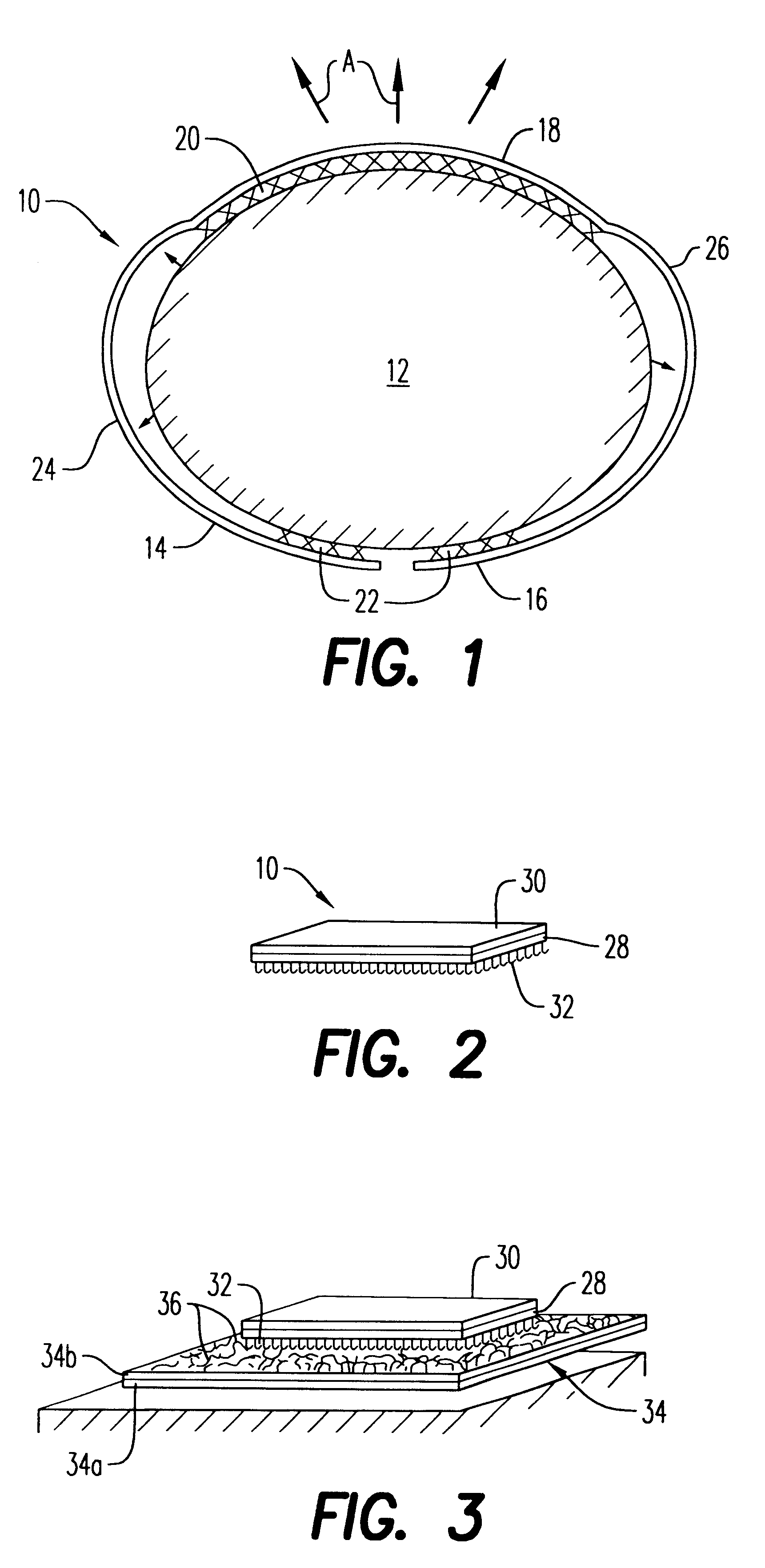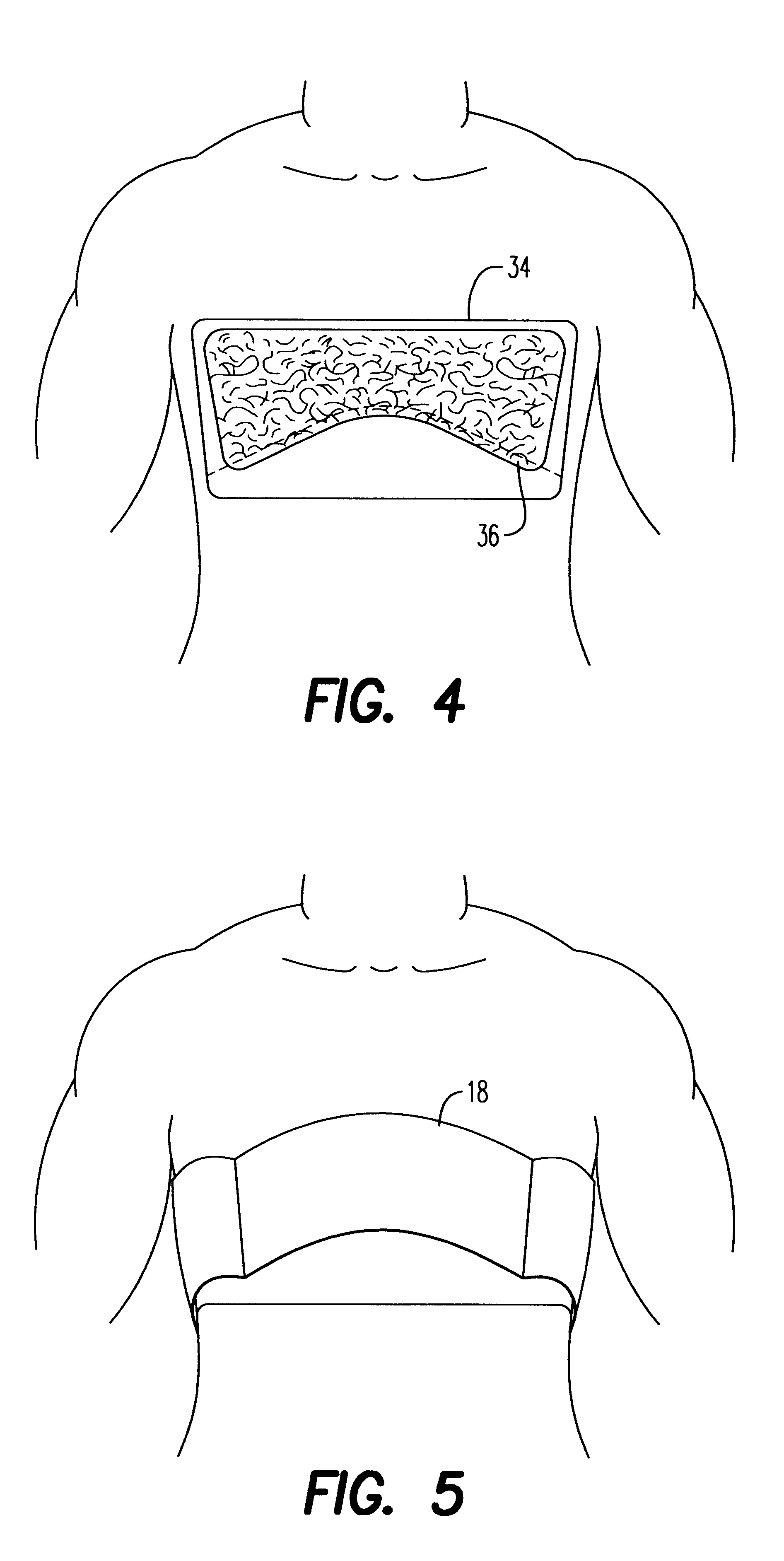Chest brace and method of using same
a brace and chin strap technology, applied in the field of chin straps, can solve the problems of weakened respiratory system of newborn infants, cpap, and weakened tidal volume, and achieve the effects of reducing tidal volume, serious side effects, and major limitations
- Summary
- Abstract
- Description
- Claims
- Application Information
AI Technical Summary
Benefits of technology
Problems solved by technology
Method used
Image
Examples
second embodiment
In addition to providing rigidity for the patient's chest wall and a continuous negative distending pressure, a chest brace 10' is adapted to provide active ventilation. Referring to FIG. 8, the exterior surface of chest brace 10' includes an air bladder 50 that is bonded thereto. By controlling the amount of air within air bladder 50, via tube 52, the stiffness of bladder 50 can be altered to control the amount of outward pull of chest brace 10', as indicated by arrows B. More specifically, filling bladder 50 with air changes its shape, and as bladder 50 straightens, it pulls the brace away from the chest. When pressure is released from air bladder 50, chest brace 10' is enabled to resume its original position by the natural resiliency of its metal core. In such manner, ventilation of the patient can be assisted by periodically altering the air pressure within air bladder 50.
third embodiment
In FIG. 9, a chest brace 10" is shown. Chest brace 10" provides the same ventilation function as chest brace 10' of FIG. 8 except that in this case, a pair of bladders 54 and 56 are positioned within a chest brace 10". Inflation and deflation of the bladders, either individually or simultaneously, controls the position of frontal resilient segment 18 of chest brace 10", as generally indicated by arrows C. In such a manner, ventilation of the patient is assisted.
fourth embodiment
FIG. 10 illustrates a chest brace 60 that comprises a pair of separated brace members 62 and 64. Anterior brace member 62 is adhered to the patient's chest wall via the same connection mechanism as described above. Similarly, posterior brace member 64 is adhered to the back of the patient in the manner described above. The spacing between brace members 62 and 64 is controlled by air pressure within a pair of corrugated respirator tubes 65 and 66. Thus, as pressure is increased within corrugated tubes 65 and 66, anterior brace member 62 moves away from posterior brace member 64. Through the action of the Velcro interconnection between anterior brace member 62 and the patient's chest wall, the patient's chest wall moves outwardly. When, however, pressure is reduced within corrugated tubing 65 and 66, a vacuum is created thereby causing a squeezing action on the patient's chest between brace numbers 62 and 64. In such manner, the patient's respiration is assisted. Control of air pressu...
PUM
 Login to View More
Login to View More Abstract
Description
Claims
Application Information
 Login to View More
Login to View More - R&D
- Intellectual Property
- Life Sciences
- Materials
- Tech Scout
- Unparalleled Data Quality
- Higher Quality Content
- 60% Fewer Hallucinations
Browse by: Latest US Patents, China's latest patents, Technical Efficacy Thesaurus, Application Domain, Technology Topic, Popular Technical Reports.
© 2025 PatSnap. All rights reserved.Legal|Privacy policy|Modern Slavery Act Transparency Statement|Sitemap|About US| Contact US: help@patsnap.com



